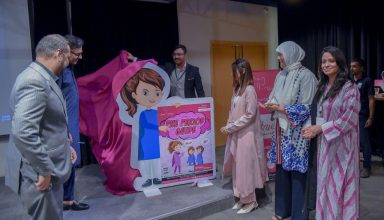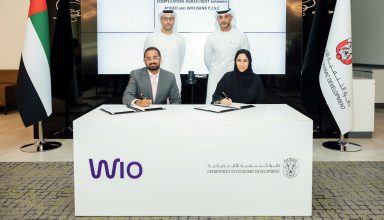Glass ceilings being smashed, status quo questioned: What future of work looks like

Glass ceilings being smashed, status quo questioned: What future of work looks like

The best personal assistants in the digital world won’t be fuelled by coffee, rather they will be powered by ones and zeros – they’ll be robotic.
When you think about the needs of these robots, most of the tasks they’ll complete will require a human skill. These skills can be found in Digital Intelligence, the understanding of how operations, processes work, and the content that fuels them – empowering you to make impact where it matters most: customer experience, competitive advantage, visibility, and compliance.
A Gartner survey suggests that 69 per cent of organisations have increased their digital transformation spend, primarily focusing on investments that foster improved customer experience and support better business insight.
Task mining allows organizations to discover the inefficiencies of manual work models outside their transactional systems and to measure and optimize the productivity of their staff. Understanding the intersection of people, processes, and data is the starting point for true business transformation impacting way of work.
“It’s not just the where you work, but it’s the, how you work. It’s the why you work at this point. That’s the future.” –Joseph Sangregorio, Chief HR Officer at Curia
We often say retro is back, in the making and its working!
Ray Oldenburg, American sociologist espoused the concept of “Third Space” working in 1990s, beyond the traditional concepts of work and home. Third Spaces such as cafes, lounges, tree lined squares, hotels are increasingly becoming the abode of voluntary, informal and happy gatherings of individuals, as a creative alternative to established norms of working. Old wine, new bottle? Maybe, but its back and that’s the new reality!
And productivity is shooting through the roof, as talents work best where they feel empowered, away from the biometrics, visual monitoring and the need to be in flashy official four walls, that often bites them in the name of bottom-line in low tides later!
My recent trip to India was an eye opener as I often found talents (mainly tech) operating out of street cafes, squares and even sports bars, happily engaged & committed to their deliverables. Picture this, someone downing a Guinness or an innocent beer or even wine for some purists, devouring their nachos & smoking their poison whilst being on non video calls with clients and office colleagues, effectively meeting deadlines & milestones!
All normalised as acceptable work behaviours, where it did not matter where you worked out from, how you dressed or turned out, the KPIs & quality of deliverables did. The balance was so refreshing in this new age of talent mobility!
With Mckinsey reporting that 90 per cent of companies anticipate a hybrid approach to work post pandemic, this is an opportunity and also a need for business to curate their own “Third Spaces”. Beyond solopreneurship and startups, conventional businesses are also steadily catching up on this phenomenon that promises to align well with the gig economy and enlightened talents.
Coming to work designations and fancy titles, long coveted by the talents, even that is dramatically shifting in recent times. Firstly, most of the work titles are not commensurate with their value add, its inherited and part of an archaic non scientific way of grading & banding matrix. Talents are becoming immune to such gleen on the surface and hollow in the core propositions.
Emaar, one of the region’s most iconic Developers surprisingly developed & launched “no titles” concept across its talent force few years back, where the designations were thrown to the bin and they just represented the Functions/Departments where they contributed to. Value was immortalised, not commoditised in the name of vanity designations, that drove a wedge between hierarchies and created silos earlier.
I remember working in Emaar when meeting rooms had no doors, no chairs and no tea/coffee served, just a big round table with a giant screen to plug in, debate the best and walk out enlightened, with a time limit of 30 minutes. Transparency and efficiency at its best.
We often suffer from meeting fatigues in most organisations!
Flat work layouts existed, when the directors and senior leadership sat across the entire hall, facing each other, when everyone collaborated with a twinkle in the eyes and passion in their guts, away from hierarchies and stuff that only degenerated progress. At 5pm, everyone would be near the elevators exacting the work life balance premise, without the compulsion of being judged on the hours spent in the office, but on how you delivered. Anyone sitting in office beyond 5pm would have to justify and take special permission, all tenets of empowered and equitable expectations at work!
The glass ceilings are being smashed, status quo is being questioned and expectations are magnified, such are the trends of future working, as talents are at the fore, much more than before!
The best personal assistants in the digital world won’t be fuelled by coffee, rather they will be powered by ones and zeros — they’ll be robotic. When you think about the needs of these robots, most of the tasks they’ll complete will require a human skill. These can be found in Digital Intelligence, the understanding of how operations, processes work, and the content that fuels them, empowering you to make impact where it matters most: customer experience, competitive advantage, visibility and compliance.
A Gartner survey suggests that 69 per cent of organisations have increased their digital transformation spend, primarily focusing on investments that foster improved customer experience and support better business insight. Task mining allows organisations to discover the inefficiencies of manual work models outside their transactional systems, and to measure and optimise the productivity of their staff. Understanding the intersection of people, processes, and data is the starting point for business transformation.
“It’s not just the where you work, but it’s the, how you work. It’s the why you work at this point. That’s the future.” — Joseph Sangregorio, Chief HR Officer at Curia
We often say retro is back — in the making and its working! American sociologist Ray Oldenburg espoused the concept of ‘Third Space’ beyond the traditional concepts of work and home. Third Spaces, such as cafes, lounges, tree-lined squares, hotels, are increasingly becoming the abode of voluntary, informal and happy gatherings of individuals, as a creative alternative to established norms of working. Old wine, new bottle? Maybe, but it’s back!
And productivity is shooting through the roof, as talents work best where they feel empowered, away from the biometrics, visual monitoring and the need to be in flashy official four walls that often bite them in the name of bottomline in low tides later!
My recent trip to India was an eye opener as I often found talents (mainly tech) operating out of street cafes, squares and even sports bars, happily engaged and committed to their deliverables. Picture this, someone downing a juice and devouring their nachos whilst being on non-video calls with clients and office colleagues, effectively meeting deadlines and milestones!
All normalised as acceptable work behaviours, where it did not matter where you worked from, how you dressed or turned out; the KPIs and quality of deliverables did. The balance was so refreshing in this new age of talent mobility!
With McKinsey reporting that 90 per cent of companies anticipate a hybrid approach to work post-pandemic, there is an opportunity for businesses to curate their own “Third Spaces”. Beyond solopreneurship and startups, conventional businesses are also catching up on this phenomenon that promises to align well with the gig economy and enlightened talents.
Coming to work designations and fancy titles, long coveted by the talents, even that is dramatically shifting in recent times. Firstly, most of the work titles are not commensurate with the value they bring in, it’s part of an archaic, non-scientific way of grading and banding matrix. Talents are becoming immune to such gleen on the surface and hollow in the core propositions.
Emaar, one of the region’s most iconic developers surprisingly developed and launched “no titles” concept across its talent force few years back, where the designations were thrown to the bin and the talents just represented the functions/departments they contributed to. Value was immortalised, not commoditised in the name of vanity designations, that drove a wedge between hierarchies and created silos earlier.
I remember working in Emaar when meeting rooms had no doors, no chairs and no tea/coffee served, just a big roundtable with a giant screen to plug in, debate the best and walk out enlightened, with a time limit of 30 minutes. Transparency and efficiency at its best.
We often suffer from meeting fatigues in most organisations! Flat work layouts existed when the directors and senior leadership sat across the entire hall, facing each other, when everyone collaborated with a twinkle in the eyes and passion in their guts, away from hierarchies and stuff that only degenerated progress. At 5pm, everyone would be near the elevators without the compulsion of being judged on the hours spent in the office, but on how you delivered. Anyone sitting in office beyond 5pm would have to justify and take special permission!
The glass ceiling is being smashed, status quo questioned and expectations magnified, such are the trends of work.
wknd@khaleejtimes.com
source: khaleejtimes



